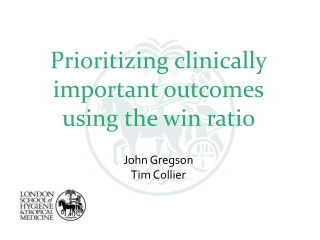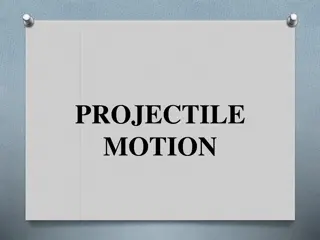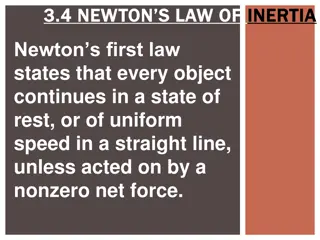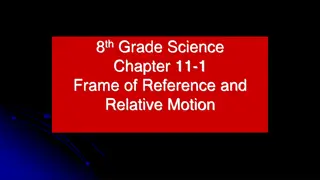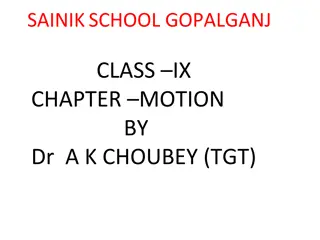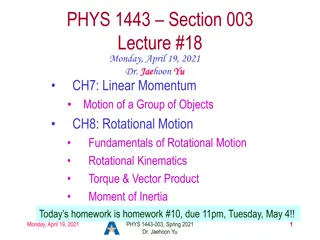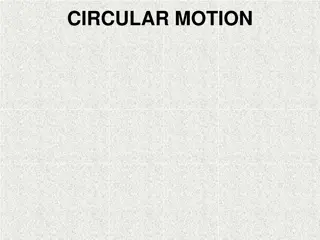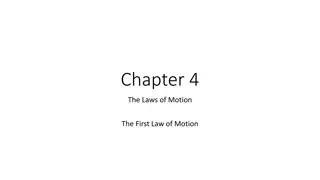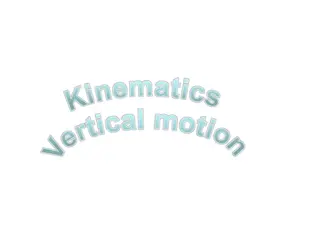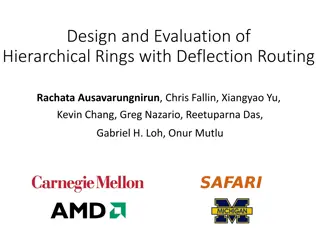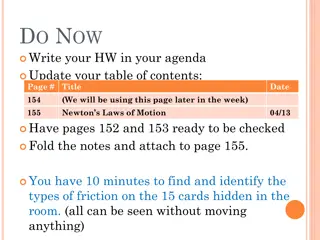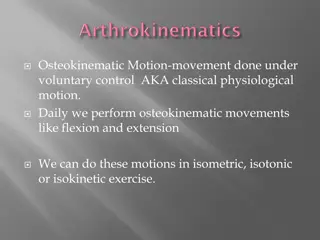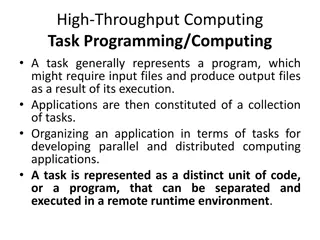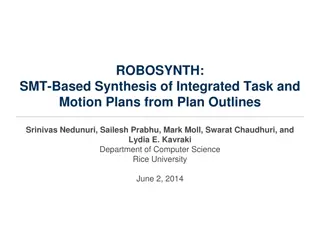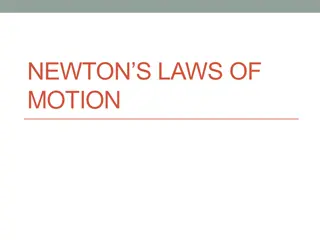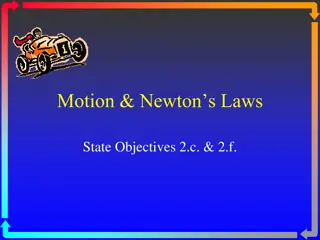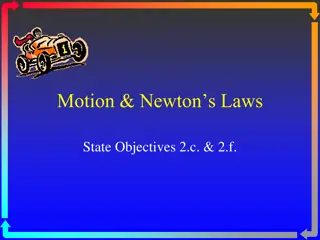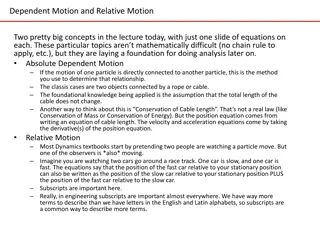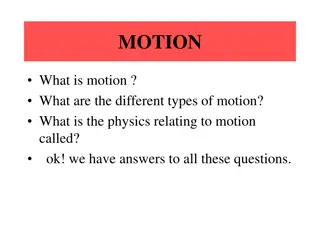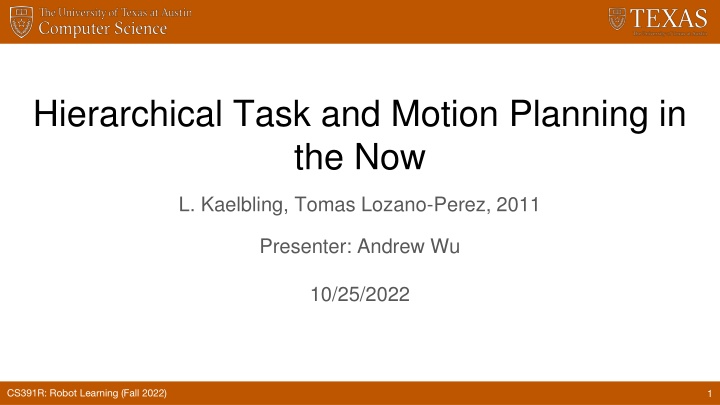
Task and Motion Planning in Robotics: A Hierarchical Approach
Explore the challenges and strategies of creating a general agent capable of robustly performing diverse tasks in varied environments through a hierarchical task and motion planning approach. Delve into the history of deep reinforcement learning and the fusion of symbolic task planning with low-level motion planning. Discover how this integrated planner copes with non-deterministic outcomes and optimizes planning efficiency.
Download Presentation

Please find below an Image/Link to download the presentation.
The content on the website is provided AS IS for your information and personal use only. It may not be sold, licensed, or shared on other websites without obtaining consent from the author. If you encounter any issues during the download, it is possible that the publisher has removed the file from their server.
You are allowed to download the files provided on this website for personal or commercial use, subject to the condition that they are used lawfully. All files are the property of their respective owners.
The content on the website is provided AS IS for your information and personal use only. It may not be sold, licensed, or shared on other websites without obtaining consent from the author.
E N D
Presentation Transcript
Hierarchical Task and Motion Planning in the Now L. Kaelbling, Tomas Lozano-Perez, 2011 Presenter: Andrew Wu 10/25/2022 CS391R: Robot Learning (Fall 2022) 1
Motivation and Main Problem The overall planning problem, especially in generalized environments. From Perez: An enduring goal of AI and robotics has been to build a robot capable of robustly performing a wide variety of tasks in a wide variety of environments; not by sequentially being programmed (or taught) to perform one task in one environment at a time, but rather by intelligently choosing appropriate actions for whatever task and environment it is facing. This goal remains a challenge. Image courtesy of Ease CS391R: Robot Learning (Fall 2022) 2
Motivation and Main Problem Let s ground ourselves in the history of deep RL since we ve mostly covered that 1989: Q-Learning 1991: TD-Gammon 1992: REINFORCE 1992: Experience Replay 1994: SARSA 1999: Nvidia invents the GPU 2007: CUDA released 2011: We are here! 2012: Arcade Learning Environment (ALE) 2013: DQN Timeline courtesy of here CS391R: Robot Learning (Fall 2022) 3
Image from a 2021 talk by Tomas Lozano-Perez CS391R: Robot Learning (Fall 2022) 4
Image from a 2020 talk by Leslie Kaelbling CS391R: Robot Learning (Fall 2022) 5
Motivation and Main Problem How do we create such a general agent? For this paper s idea: - For specified domains we can combine ideas from symbolic task planners and low level motion planning to create an overall planner - To reduce an exponential search, we can be aggressively hierarchical in constructing our plan - In non-deterministic outcomes from actions, we can back up and re-evaluate our plan after every action CS391R: Robot Learning (Fall 2022) 6
Context / Related Work / Limitations of Prior Work - Using Abstraction to Interleave Planning and Execution (Nourbakhsh, 1997) - Hierarchical Reasoning - No Geometric Reasoning Manipulation Planning Among Movable Obstacles (Stilman et. al, 2007) - Similar DFS-like planning - No Task Planning, specific manipulation task Sampling-based Motion and Symbolic Action Planning with Geometric and Differential Constraints (Plaku, Hager, 2010) - Similar formulation of integrated motion and symbolic action planning but without hierarchy and with utility-based actions - - Nothing really integrated Hierarchy, Task planning, and Motion planning at the geometric level! CS391R: Robot Learning (Fall 2022) 7
Finite Domain Representation Let s borrow some notation from logical representation - Fluents - Symbolic predicate applied to list of arguments (constants or variables) - All constants is a ground fluent which values are determined by the state - World States - Complete, detailed description of domain geometrically and non-geometrically - Goals - Set of world states described using a conjunction of fluents - Operators - Primitive actions with STRIPS-style form CS391R: Robot Learning (Fall 2022) 8
Infinite Domain Representation - Suggesters - maps bindings of variables to restricted domains - Inferential attachments, procedural operators, contradicts attachment, non-deterministic side effects, and more! CS391R: Robot Learning (Fall 2022) 9
Algorithm Image from the paper CS391R: Robot Learning (Fall 2022) 10
Example: Washing domain Fluents: In(O, R): True if Object O contained in region R Overlaps(O, R): True if O overlaps R ClearX(R, O1, O2, ): True if R is not overlapped with any Os Holding(): Returns object grasped, otherwise None Clean(O): True if O is clean CS391R: Robot Learning (Fall 2022) 11
Example: Washing domain Place operator Pick operator Image from the paper CS391R: Robot Learning (Fall 2022) 12
Lets remind ourselves: Image from the paper CS391R: Robot Learning (Fall 2022) 13
Image from the paper CS391R: Robot Learning (Fall 2022) 14
Image from the paper CS391R: Robot Learning (Fall 2022) 15
Image from the paper CS391R: Robot Learning (Fall 2022) 16
Correctness Correctness Criterion: If a goal state is reachable from the start in a sequence of actions, then HPN should reach it. HPN can do this under: 1. Each abstraction level has complete and correct formalization of primitive actions of domain 2. Start has static connectivity with that domain 3. Goal reachable from start CS391R: Robot Learning (Fall 2022) 17
Experimental Setup - Pretty ill defined setup - Seems to be simulation in a household domain - 6 rooms now, objects of vacuum , mop , junk - Clean all rooms (vacuum and mop + move all junk into closet) - Swap location of two blocks x 6? CS391R: Robot Learning (Fall 2022) Image from the paper 18
Experimental Results - Example rollout w/ non-deterministic implementation - Search is exponential in length of plan: - None of pre-2011 planners could solve! Image from the paper CS391R: Robot Learning (Fall 2022) 19
Discussion of Results - Hierarchy helps! - Being aggressively hierarchical in a greedy-esque fashion reduces the search space one considers - Able to solve tasks that has non-serializable goal swap CS391R: Robot Learning (Fall 2022) 20
Critique / Limitations / Open Issues - Key Limitations: - Needs observable domain - Needs formalized actions - Needs good hierarchical abstraction which is domain dependent - Not Optimal - And that can be okay! - Sampling in infinite space could be better - Experiments could be a lot more thorough/better but really nothing to compare to Image from a 2020 talk by Leslie Kaelbling - CS391R: Robot Learning (Fall 2022) 21
Future Work for Paper / Reading - From a 2020 talk by Leslie Kaelbling, she states in a paraphrased fashion that: While there is enormous progress in RL and IL, they do not yield solutions for generally intelligent autonomous agents - There needs to be human insight to impart algorithmic and structural biases to complement these algorithms - Extension questions: - How do we deal with a partially observable domain? - How do we get away from constructing the hierarchies manually? Formalizing the actions? - With models such as GATO existing now, does Kaelbling s ideas still hold? CS391R: Robot Learning (Fall 2022) 22
Extended Readings - The 2020 survey paper on TAMP shows the derivative works that tackle some of the previous problems - Next two papers are all derivative works! - Integrating Task-Motion Planning with Reinforcement Learning for Robust Decision Making in Mobile Robots (Jiang et al, 2018) - TAMP with RL - Learning Neuro-Symbolic Skills for Bilevel Planning (Silver, Athalye et al, 2022) - Learning policies w/ learning operators and samplers - Others: - Long-Horizon Manipulation of Unknown Objects via Task and Motion Planning with Estimated Affordances (Curtis, Fang, et al, 2021) - Working with no models CS391R: Robot Learning (Fall 2022) 23
Summary Tackling general, long-horizon planning in a well-defined domain RL and IL have long struggled at long-horizon, general tasks Prior works do not integrate Task AND Motion planning or include hierarchy Hierarchy reduces search space DFS-like algorithm allows for re-evaluation on non-deterministic actions Surprisingly powerful planning although in formalized environments CS391R: Robot Learning (Fall 2022) 24

